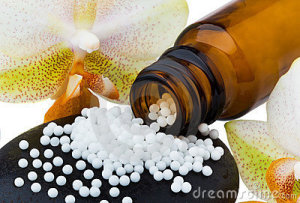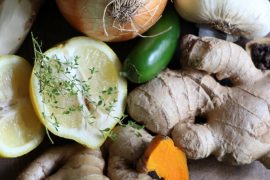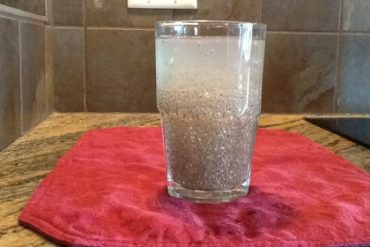What is Homeopathy?
Homeopathy is a safe, effective and natural system of healing that works with your body to relieve symptoms, assist with restoration and improve your overall health. Homeopathy uses highly diluted herbs, minerals, or animal products (such as bee venom) in minimal doses to trigger the body’s natural ability to heal. After taking a case history a homeopath will match the appropriate remedy to each individual. Remedies are available in numerous forms such as pellets, tablets, and liquids with either an alcohol or glycerin base.
The Founder of Homeopathy
Homeopathy was discovered by Samuel Hahnemann (1755-1843), a 19th century German physician and chemist. “Appalled by the barbaric and violent medical practices of the time and concerned for the health of his growing family, Hahnemann spent years conducting experiments to study the healing properties of various materials. He believed that small doses of natural drugs could provoke symptoms of the diseases they sought to cure, prompting the body’s own immune system to heal itself. The practice of homeopathy grew from this theory, based on Hahnemann’s thesis that “like cures like.” The doctor devoted his life to homeopathy, conducting endless tests, promoting his theories, and battling detractors. Homeopathy flourished around the world. Its popularity peaked in the United States in the early 1900s, then suffered a sharp decline due to protests from proponents of modern medicine, although it has remained immensely popular in many parts of the world, including India and Europe.” (1)
Homeopathy, along with other alternative options is enjoying a resurgence in the U.S. So much so that even the AMA acknowledged it in a 1998 article in JAMA, the Journal of the American Medical Association, called Homeopathy “another tool in the bag,” which acknowledged its prevalence.” (2) Anyone can learn to treat simple conditions at home with homeopathy, but you should always consult a professional for persistent, or serious conditions, or life threatening situations.
The Law of Similars
Homeopathy is based on the theory that like cures like. For example, if a person has seasonal allergies, with watery eyes and burning nasal discharge, they may use the remedy Allium cepa (made from red onion) to stimulate the healing process. Of course this is only one of many remedies that can be used for allergies based on your individual symptoms.
Benefits of Homeopathy
•Homeopathic remedies are made from natural sources such as plants, minerals and animals (such as bee venom).
•They are environmentally friendly and safe for adults, children, the elderly, and pets.
•Since the doses are so small they rarely cause negative side effects.
•Homeopathic remedies are very inexpensive.
•Homeopathic remedies are easily found through natural health practitioners, online and at natural food stores.
•Remedies are tailored to the whole person, based on their individual symptoms.
•Homeopathic remedies are available in numerous forms such as pellets, tablets, and liquids with either an alcohol or glycerin base.
What Is “Classical” Homeopathy?
Over the last 200 years many definitions of “classical” homeopathy have been used. At the core of nearly all of these definitions are the following key elements:
The Law of Similars: matching the symptoms of a medicine tested on healthy humans to the individual seeking treatment.
The Minimum Dose: determining the least amount of medicine needed to effect the needed change.
Totality of Symptoms: matching the complete symptom profile of the patient to the symptom profile of the remedy.
Single Remedy: administration of one remedy at a time.
What Are Combination Remedies?
A combination remedy is used to address specific conditions by using a mixture of remedies each of which have a strong history of treating a particular ailment. These combination remedies are used for short term treatment of temporary mild conditions. If the illness is long term or a more serious condition, you should see your homeopath for a protocol suited to your needs.
Are Homeopathic Remedies Regulated?
Homeopathic remedies are considered drugs under U.S. federal law, and the FDA regulates the manufacture, marketing, and sales of all homeopathic medicines. Homeopathic medicines are made according to a book of standards called the Homoeopathic Pharmacopoeia of the United States (HPUS). (3)
What Does the Letter On The Remedy Label Mean?
In this article I am discussing only the commonly available strengths of X and C. These potencies are commonly available online and at natural markets. Other potencies such as M, CM, DM, MM are available through your practitioner.
The X potency is diluted on a scale of 10. One part of remedy and 9 parts of diluent are used. This creates a 2x remedy. You then use 1 part of the 2x and 9 parts of diluent to create a 3x remedy and so on.
The C potency is a remedy that is diluted on a scale of 100. It begins with 1 part of remedy and 99 parts of diluent.
What Does The Number On The Remedy Label Mean?
The number on the remedy tells us how many times it has been diluted and succussed. For example a 30X indicates a substance, diluted at a ratio of 1:10, has been taken through thirty steps of dilution and succussion.
While a 30C potency tells us that a substance, diluted at the ratio of 1:100, has gone through 30 steps of dilution and succession
To compare the decimal and centesimal scales, we simply divide the decimal in half to get the comparable centesimal, or multiply the centesimal by two to find the comparable decimal. For example, a 30X is similar to a 15C, while a 30C is similar to a 60X.
What Forms Are Remedies Available In?
Medicated Pellets are round, 85% sucrose, 15% lactose pills that have been medicated with a dilution. Common pellet sizes are #35 (the size of a BB), #20 (Poppy Seed) and #10 (a grain of sand).
Soft Tablet Triturates are soft, molded tablets. They dissolve almost instantly when placed in the mouth and contain only the active ingredients in a base of lactose with a small amount of acacia gum to hold them together.
Dilutions are liquids, usually dispensed via dropper directly under the tongue or in distilled water. They consist of 20% alcohol (for internal use) and 87% alcohol (for medicating pellets).
What’s The Best Way To Store Homeopathic Remedies?
Like traditional medicines, whether over the counter or prescriptions, it’s best to keep them tightly sealed in a dry place, out of direct sun, away from heat sources, and any strong smelling products such as menthol ,colognes or perfumes.
Want to Learn More? Here’s a List of Homeopathy Books for the Home and Family
Everybody’s Guide to Homeopathic Medicines, Safe & Effective Remedies For You and Your Family by Stephen Cummings M.D., and Lana Ullman, MPH
Homeopathic Medicine at Home, Natural Remedies For Everyday Ailments and Minor Injuries by Maesimund B. Panos M.D. and Jane Heimlich
A Homeopathic Handbook of Natural Remedies, Safe & effective Treatment of Common Ailments and Injuries by Laura Josephson, C.C.H., R. S. Hom.
The Complete Homeopathy Handbook, Safe and Effective Ways to Treat Fevers, Coughs, Colds and Sore Throats, Childhood Ailments, Food Poisoning, Flu And a Wide Range Of Everyday Complaints by Miranda Castro
References:
1. http://www.encyclopedia.com/topic/Samuel_Hahnemann.aspx
2. JAMA, The Journal of the American Medical Association, March 4, 1998, p. 707
3. http://www.hahnemannlabs.com
The Science of Homeopathy, by George Vithoulkas
The Organon of the Medical Art, by Samuel Hahnemann
Materia Medica with Repertory, 9th Edition William Boericke, M.D.








